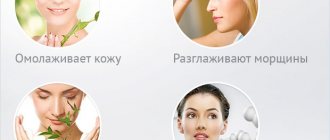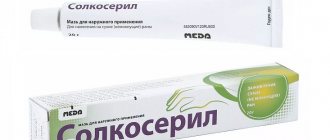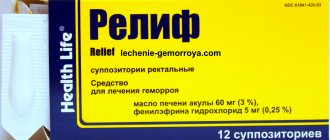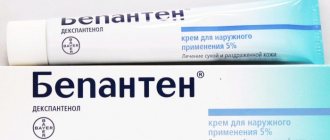Since ancient times, humanity has been familiar with various skin diseases and problems. At all times, people have strived to maintain healthy and youthful skin using various available means. Traditional medicine was widely developed, using products of the animal and plant world for the benefit of humans. This is how medicines and cosmetics appeared.
“Lubrication is one of the remedies that go to the very [source] of the disease. Sometimes a medicine has two powers, a soft one and a hard one, and the need for the soft force is greater than the need for the hard one. When the rough [force] of the medicine balances the soft force, then if the medicine is used in a bandage, the soft force penetrates [the body], and the rough force is delayed, and [the patient] benefits from the penetrating force."
ABOUT OINTMENTS. CANON OF MEDICAL SCIENCE. ABU-ALI IBN SINNA (AVICENNA)
A LITTLE HISTORY
Ancient Egypt can rightfully be called the ancestor of cosmetology and cosmetics. The cult of beauty and youth reigned among all representatives of the Egyptian nobility. Every person on Earth knows the name of the Egyptian queen Cleopatra, who had extensive knowledge of chemistry, perfumery, cosmetology, and herself created recipes for the manufacture of cosmetics. Based on these ancient recipes, some modern companies produce creams for the face and body.
One of these products, according to Cleopatra's recipe, is intended to preserve youthful skin and prevent the appearance of wrinkles. To prepare you need:
- Aloe Vera powder - 5 grams;
- Distilled water - 40 grams;
- Rose water - 20 milliliters;
- Bee honey - 10 grams;
- Rendered lard - 100 grams;
Essential oils, such as rose damask oil, were also added to enhance the scent. This cream is not stored for long, always in a well-closed enamel or glass container in a cool place (refrigerator).
Classification
Before the advent of cosmetics, medicinal ones appeared. History often mentioned ointments for joint pain, scabies, crusts on the skin, and others. Therefore, medicinal ointments are the ancestor of all other plastic medicinal and cosmetic forms applied to the surface of the skin and mucous membranes.
A dosage form is a state of a medicinal product that ensures the achievement of the required therapeutic effect with the appropriate method of administration.
The State Pharmacopoeia of the Russian Federation offers a modern classification of dosage forms.
In this case, we are interested in soft dosage forms (ointments) for external or local use, which are homogeneous, heterogeneous and combined systems.
It is worth noting that based on the classification of medicines, a classification of cosmetics for external use has been compiled, which is still very diverse.
Types of wounds
The choice of wound healing agents primarily depends on the type of wound itself and its characteristics. The current classification implies the following points:
- Nature of damage. In this case, we mean the conditions under which the injury occurred. According to this parameter, wounds are cut, chopped, punctured, bruised, etc.
- Microbial contamination. The presence of microorganisms in the wound is accompanied by its suppuration. Local reactions in the form of inflammation and increased tissue temperature are also possible. In such cases, it is necessary to use an ointment for healing wounds and cuts with antibacterial components. Clean wounds are also called aseptic wounds. In this case, there is no talk of microbial contamination. This means there is no need to use antibacterial ointment to heal wounds and cracks. It is enough to limit ourselves to other groups of drugs.
Damage to the skin can develop as a result of household trauma (cuts), exposure to external physical (burns, frostbite) and chemical factors, as well as in the presence of concomitant diseases (ulcers, bedsores, erosion). In each case, it is important to choose the appropriate healing ointment for cuts and wounds and use it correctly.
What is the difference between liniment and ointment?
Liniment is not very different from ointment. We can say that liniment at a temperature below room temperature is an ointment, and at a temperature above room temperature it is a liquid.
What follows from the definition of liniment:
Liniment is a soft dosage form that flows at body temperature.
A good example is Vishnevsky Ointment, which is actually a liniment. You've probably noticed that when applied to the skin, this product becomes more liquid.
Another example is Synthomycin Liniment, which flows very well when heated on the skin, but has a thick consistency when stored in the refrigerator.
A visual diagram of the differences between the funds
What is ointment?
This release form contains the most fat. Therefore, ointments are used to combat dry skin rashes. They are also used in the presence of infiltrations on the skin. This category of drugs is characterized by the greatest depth of penetration of the active substance into the tissue. The maximum effect is achieved when applying the ointment under the bandage.
Since the fatty ingredients of ointments are not absorbed into the skin, they often stain clothing, which leads to some discomfort. It is also worth considering that it is forbidden to treat weeping skin rashes with these products.
How is a paste different from an ointment?
The difference between a paste and an ointment is that the paste has a larger mass fraction of crushed solids than can be in the ointment.
Paste is a soft dosage form containing 25% or more finely ground solid active substance.
A typical example is Zinc paste and Salicylic-Zinc paste.
Composition of zinc paste:
- Zinc oxide - 25 grams (active ingredient);
- Starch - 25 grams (excipient);
- Vaseline 50 grams (excipient).
Composition of salicylic-zinc paste:
- Zinc oxide - 25 grams (active ingredient);
- Salicylic acid - 2 grams (active ingredient);
- Starch - 25 grams (excipient);
- Vaseline 48 grams (excipient).
What is cream
To answer the question of what a cream is, let’s look at two concepts - the concept of it as a medicine and as a cosmetic product.
Cream is a soft dosage form in the form of a multicomponent system consisting of lipophilic “water/oil” and hydrophilic “oil/water” parts or a multiple emulsion.
Cosmetic creams are a mixture of synthetic and natural products: fats, waxes, oils, infusions or extracts of medicinal herbs, vitamins, dyes, antioxidants, preservatives, fragrances and other additives that provide consumer properties of creams and are approved for use in the prescribed manner. (GOST 31460-2012 Cosmetic creams. General technical conditions)
As mentioned above, creams are combined systems containing homogeneous and heterogeneous parts.
Example of cream composition
As you can see in the photo, the creams contain:
- Water - Aqua;
- Oils (Soybean sprout oil - Glycine Soja Oil, Cocoa Butter - Theobroma Cacao Seed Butter, etc.);
- Solids (urea - Urea, allantoin - Allantoin, etc.);
- Other substances.
And all these components have different characteristics, so we can conclude that these are almost always complex emulsion-type systems.
An emulsion is a heterogeneous system formed by two immiscible liquids, where particles of one liquid are distributed in the volume of another liquid.
Emulsions will always tend to separate into two layers of liquids, so emulsifiers are introduced to ensure their stability.
Emulsifiers are substances capable of forming emulsions of two immiscible liquids by forming around the particles of one of the liquids a sphere of chemical molecules soluble in the second liquid. You can clearly see it in the picture.
Operating principle of the emulsifier
As for the liquids themselves that form emulsions, they are divided into 2 types:
- Hydrophilic (“water-loving”), that is, miscible with water in all proportions, they are also called polar in chemistry. The molecules of such liquids, like the water molecule, have two poles: “+” - charged and “-” - charged. Examples: alcohol, glycerin, aqueous plant extracts, etc.
- Hydrophobic (“afraid of water”) or lipophilic (“loving fats”) are liquids that are completely immiscible with water. In chemistry they are called non-polar. Examples: fatty and essential oils, petroleum jelly (liquid paraffin), low molecular weight polyethylene glycol, etc.
These 2 types of liquids form 2 types of emulsions, depending on which liquid is more:
- 1st type - oil-in-water emulsion;
- Type 2 - water-in-oil emulsion.
A third type of emulsion is often distinguished—mixed type emulsions.
Such emulsions contain enough emulsifier to form a water/oil/water or oil/water/oil double emulsion. Mixed emulsions include mixtures of 3 or more liquids.
What is the difference between cream and ointment
There is not just one difference between cream and ointment, there are several:
- Unlike ointment, it has a less dense and lighter consistency, which is easier to apply to the skin;
- Features a greater variety of ingredients than ointment;
- Medicinal cream, unlike ointment, has a shallower depth of penetration into the layers of the skin;
- It is less greasy, and therefore less comedogenic, than ointment;
- Absorbs faster and usually does not leave a greasy feeling on the skin, although not always;
- The ointment is designed to ensure that the drug remains on the skin for a long time, and the cream is designed to restore the lipophilic balance of the skin.
It is the latter property of creams that has made them so widespread not only for medicinal, but also for cosmetic purposes.
The main property of the cream
Due to the ability to introduce lipids, ceramides and other healthy fats into its composition through the formation of emulsions, it is possible to restore the damaged lipid barrier of the skin.
The structure of the epidermis
It should be noted that not only creams, but also complex emulsions themselves can cope with this task. But due to their denser consistency, they stay on the skin longer, are absorbed deeper, and therefore have a greater effect.
Lipid barrier
Not just one ointment
Various forms of drugs can be used to treat skin and other external diseases, as well as in cosmetology practice. These are powders (powders), lotions, lotions, shaken suspensions (chatters), sprays, gels, pastes, oils, creams, ointments, etc.
Quite often, a situation occurs when a patient, having received from a doctor the name of a medicine to be applied to the skin, is faced with a choice just before purchasing - ointment or cream? (sometimes colleagues who are exhausted by optimization forget to indicate) The name is the same, the price is slightly different... Are these dosage forms different and what is the right thing to do?
Attention! In the following text, the terminology is given as it is used by official medicine (mainly dermatologists); Manufacturers of various lines of cosmetics and products for aesthetic medicine, for the purpose of better promotion, interpret the word “cream” as broadly as desired, although in essence it may turn out to be an ointment or even a paste.
About dosage forms
Let's start with the fact that the active substance in modern dermatological preparations is quite small - milligrams, and sometimes even fractions of milligrams per dose. And in order to evenly distribute this very substance over the affected area, a base is used. And it determines at what stage of the inflammatory process the medicine will act, as well as the strength, duration and depth of the effect.
Gel
- has a soft and viscous consistency. It is usually made on a water basis and does not contain fats and oils. This is important when, on the one hand, you need to ensure long-term and convenient use (which is impossible, for example, for medical lotions), and on the other hand, you want to avoid hydrophobic components that interfere with the free outflow from the skin glands (for example, in the treatment of rosacea and common eels).
Cream
- a form whose base contains oils, water and an emulsifier that allows them to interact. Modern creams, as a rule, are multi-component. The cream is well absorbed into the skin, within a few minutes after application it does not stain clothes and does not leave an oily sheen on the skin. The depth of penetration of the active substance is less than that of the ointment. Used for inflammatory reactions, can be applied to more delicate areas of the body.
Ointment
- a form containing a higher amount of fat. Characterized by the greatest depth of penetration of the active substance. Recommended for the treatment of dry skin rashes in the presence of infiltration (compaction) in the skin. Typically applied to exposed skin. The use of ointments “under a bandage” (strictly on the doctor’s recommendation) further increases the depth of penetration of the active substance (this is sometimes necessary for old psoriatic plaques). Ointments should not be used on weeping skin rashes. Since the fatty components of ointments are not absorbed into the skin, they can stain clothing, which is not always acceptable in outpatient practice.
Lotion
- a liquid dosage form, the base of which contains alcohols and water. In finished dosage forms it is used mainly for treating the scalp (since it practically does not stain the hair).
Paste
- contains at least 20% dry matter. Pastes are prescribed in cases where an adsorbing and drying effect is required. Medicinal substances in pastes are poorly absorbed by the skin, so their effect in pastes is weaker than in ointments.
About the possibility of replacement
Independent (without the participation of the doctor who made the prescription) replacement of one dosage form with another is extremely undesirable, even if the concentration of the active substance is the same (and it is not always the same, check!).
However, life is more complicated than rules. If you are in an area where there are very few pharmacies and there is no choice of drugs, or the doctor has not indicated the form, etc., then you can replace the ointment with cream (if the active substance is in the same dose), but not vice versa!
In extreme cases, you will lose a little in effectiveness; after all, the cream usually has a less pronounced effect. But at least there will be no complications... unlike the reverse replacement (if the ointment is unknowingly applied to a more inflamed area than is permissible).
About simultaneous use
Modern dosage forms (at least those prescribed by dermatologists, and not purchased on the advice of neighbors and authors of columns about healthy lifestyle from home-grown newspapers) have long not contained terrible amounts of pork or bovine fat, petroleum jelly, lanolin. Now these are, as a rule, complex multi-component systems. They are well absorbed, providing the required concentration of the active substance at the required depth, do not contaminate clothes and skin, and have a reduced frequency of use.
IMPORTANT! Unless the doctor has indicated otherwise, dosage forms should not be mixed, as they may be destroyed during interaction. If there is a need to use several drugs at once, they should be applied in a checkerboard pattern, alternating areas, or alternating application over time.
About storage
In addition, there are storage restrictions. The shelf life indicated on the package is the shelf life of the sealed drug. After opening, it does not exceed 6 months (unless expressly stated otherwise) for ointments in tubes, 3 months for ointments in jars, 1 month for creams. Some drugs are specially marked with an open packaging icon and expiration date.
Only those medications that should be stored there according to the instructions should be placed in the refrigerator. The rest are stored at room temperature, in the absence of high humidity, direct sunlight, or heat.
Good health!
Leonid Shchebotansky
Photo istockphoto.com
What is the difference between serum and cream?
The main difference between serum and cream is its liquid consistency.
Serum is a liquid cosmetic product that contains a high concentration of active ingredients.
Few people know that using serum as an independent product is inappropriate without applying cream. The serum is applied after cleansing and toning the skin. The components of the serum penetrate into the upper layers of the skin. But the serum is liquid and without a top coat it will quickly evaporate.
In addition, washing away the impurities and the entire lipid barrier of the skin by washing helps better penetration of the serum, but the natural protective barrier of the skin must be restored by applying cream. Otherwise, unprotected skin will attract impurities to the sticky surface of the serum, which will adversely affect the condition of the skin itself.
There are concentrated products; when used, there is no need to use serum.
Why does an ointment, cream or gel help “thin” people better than “overweight” people?
A very important feature characteristic of topical drugs is the ability of the drug to penetrate the affected area. The deeper and better the ointment, cream or gel penetrates into the skin, the better this product helps.
For example, slender people may experience better results from the use of painkillers or warming ointments, while excess subcutaneous fat in obese patients may interfere with the quality penetration of external agents. Excessive fat is a kind of barrier to the penetration of medicinal substances to the diseased area.
The most pronounced effect is the use of external agents for cervical osteochondrosis. Almost immediately after applying the ointment, the patient experiences an increase in motor activity and improvement in condition. This is also due to the fact that the skin and fat layer in the cervical region is thinner, which makes it easier for the therapeutic components of the ointment to reach the site of inflammation. In addition, there are more vessels, capillaries and nerve endings located on a person’s neck than, for example, in the lumbar region.
Modern medicine has a large number of external medications used to treat joint or back pain. Which one helps better is difficult to answer. The human body is individual. And if an ointment, cream or gel helps one person well, then it may not help another. Everyone chooses for themselves what suits them.
All medications have contraindications, so before using them you should consult a specialist.
Be healthy!
What is gel
Gels, just like creams, are medicinal and cosmetic.
A gel as a dosage form is a soft dosage form obtained by gelation using special substances - gelling agents.
Cosmetic gels are a mixture of synthetic and natural products with a gel-like consistency:
- Water;
- Gel-forming components;
- Plant extracts;
- Oils;
- Vitamins;
- Dyes;
- Preservatives;
- Fragrances and other additives that provide consumer properties of gels. (GOST 31695-2012 Cosmetic gels. General technical conditions)
Gel-forming components (gelling agents) are substances of plant, animal or chemical origin that have large molecular sizes and form a plastic spatial network in the cells of which a solvent (water) is located.
The gelling agents are:
- Gelatin;
- Comedy;
- Carboxymethylcellulose;
- Carbomer;
- Agar-agar;
- Pectin;
- Other substances.
The advantages of gels include:
- The speed of the effect;
- Fast absorption;
- Low density;
- Non-comedogenic as a result of the absence of a fatty base;
- The formation of a film on the surface of the skin; this film can perform a protective function.
Speed of action is most important in case of pain and allergic reactions, for example, a gel with Diclofenac will act faster than an ointment. The most effective antiallergic agents for external use, Fenistil and Psilo-Balm, are available in the form of gels.
What is the difference between gel and sol?
The difference between a gel and a sol is that a sol is a dispersed system, which is a cross between a homogeneous system - a solution, and a heterogeneous system - an emulsion or suspension, and a gel is the final product of the transformation of the sol.
The gelling agent particles are in water—this system is a sol. When the gelling agent particles swelled due to interaction with water molecules, a gel was formed.
Sol is more of a literary term to denote the classification of dispersed systems. Gel is its practical embodiment.
What is the difference between cream and gel?
Cream differs from gel mainly in the presence of a fatty component (oils and other fats). Gel is an independent system, cream is a complex combined system containing an emulsion. There is an intermediate product between gel and cream, it is called Emulgel. The dosage form of the emulgel has absorbed all the advantages of the emulsion and gel - it has become possible to include fatty or fat-soluble components in the gel composition. A typical example is Voltaren Emulgel.
We do not advertise specific medicinal brands! All examples are provided solely for clarity and better understanding of the material.
An analogue of the emulgel dosage form in cosmetics is jelly for the face.
Conclusions TheDifference.ru
- Water is used as a base in the gel, and specific (vegetable, animal, mineral and other) fats are used in the ointment. Accordingly, the gel has a hydrophilic base, and the ointment has a hydrophobic base.
- The gel spreads quickly, dries almost instantly and adheres well to the skin, forming a thin film without clogging the pores. The ointment is absorbed much more slowly and can clog pores.
- Due to its fatty base, the ointment has a predominantly moisturizing and softening effect. It is applied mainly to flaky, irritated areas and perfectly heals the surface of the skin. The gel simultaneously dries and supplies moisture to the body. Therefore, it is good for wet wounds, as well as for joints and deep layers of skin.
- A greasy ointment is more difficult to wash off from clothes than a completely non-greasy, easily washed off gel.
What is the difference between gel and ointment
The gel differs significantly from the ointment, namely:
- Manufacturing technology and components;
- By the speed and duration of action (the gel penetrates and acts faster, the ointment penetrates deeper and acts longer);
- By consistency (the ointment has a denser and greasy consistency, and the gel has a light watery structure of loose jelly);
- Cosmetic gel is used to moisturize the skin, ointment is a medicine.
The difference between an ointment and a gel must be considered in the context of dosage forms to understand how quickly and for how long you want to receive a therapeutic effect.
External medicines.
Ointment, cream or gel are external medications that are used in modern medicine for various diseases. Today we will analyze one medicinal group - these are external agents used to treat diseases of the musculoskeletal system: osteochondrosis, arthritis, arthrosis, etc.
The most commonly used treatments for these diseases are:
- PAIN RELIEF ANTI-INFLAMMATORY MEDICINES are external medications that contain the active ingredients diclofenac, nimesulide, ketoprofen, ibuprofen, etc. They relieve inflammation, swelling and redness well. Significantly reduce joint pain and morning stiffness. You can read more about this group of drugs in this article - NSAIDs.
- HEATING PRODUCTS – external medications, the therapeutic effect of which is due to local irritation of skin receptors. By dilating blood vessels and increasing blood flow, nutrition of the affected joints improves, all metabolic processes are normalized and the patient’s condition significantly improves. As a rule, these ointments contain medicinal substances: capsaicin, nicoboxil, bee venom, snake venom, fir oil, clove oil, turpentine and others.
Very often, pharmacy visitors cannot decide what to buy: ointment, cream or gel. What is the difference between them and which helps better? So…









